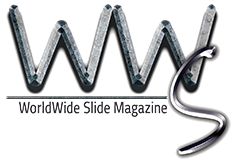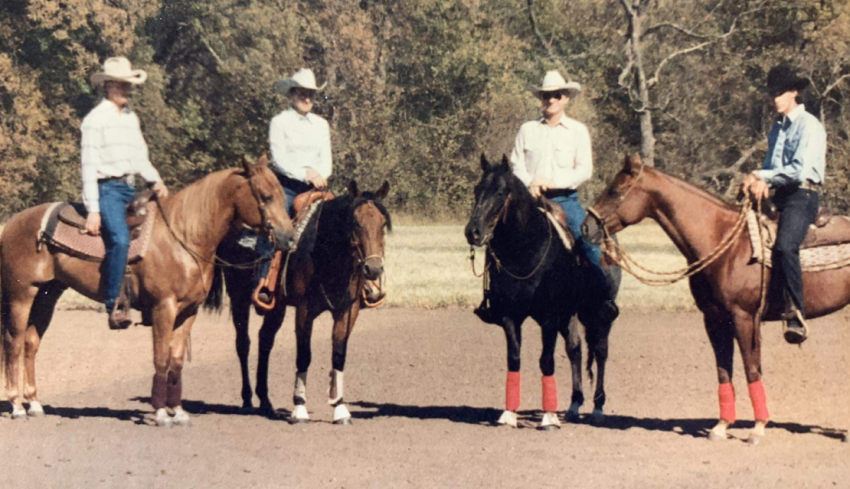Although many could not understand their decision, something about moving to Oklahoma resonated with a special group of reiners who felt a sense of homecoming on arrival. Like those who moved to Texas, the early immigrants created a new equine-centered community and a competitive but supportive culture. The Sooner state became home. There was plenty of land, the proximity to I-35 ensured buyer traffic, and the Futurity at Oklahoma City was only 90 minutes away.
Bob Loomis
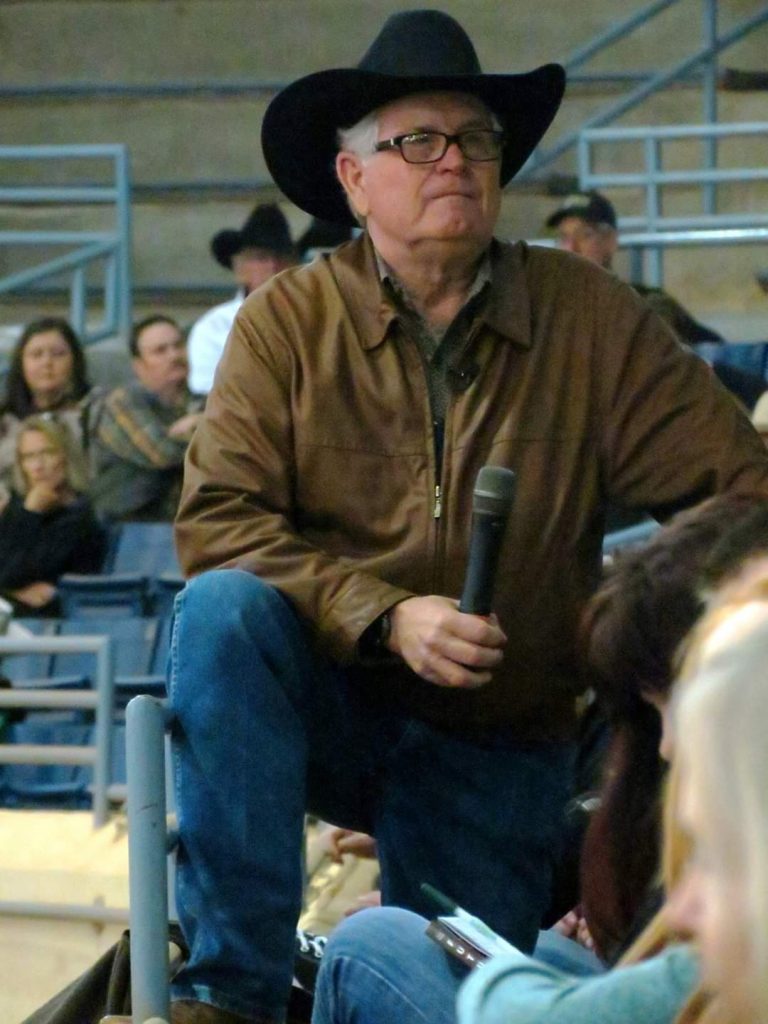
The first pilgrim on the journey was Bob Loomis. He is a man with unparalleled vision, but he was never just a dreamer because he also possessed the ability to turn his dreams into reality with hard work, unerring focus, and force of will. He’ll be remembered as the winner of six National Reining Horse Association Futurities and a host of other laurels. He was also the leader in creating a breeding program to raise horses specifically for reining.
Moving south had been on Bob’s mind for a while when he finally moved to Marietta, Okla. from Nebraska in 1985. There were multiple reasons for the move and one of the big ones was the difficulty of running a horse operation in a state with admittedly harsh winters. He said, “Weather – that was one of the very biggest factors. What we would call a bad day here in Oklahoma would be like Indian summer up there!”
The oncoming international expansion of reining was another piece of the puzzle. Bob explained, “At the time, I had been President and was still very active on the NRHA Board. I was going to Europe a lot and doing clinics. I could see that the Europe thing was going to break open because they loved the reining horses. The Futurity was moving to Oklahoma in 1986. I knew all that was coming and I wanted to be here before the first Futurity. I felt it would bring the European buyers and investors. Well, I no more than moved here and the international horse thing went crazy. We started sending airplane loads of horses to Europe.”
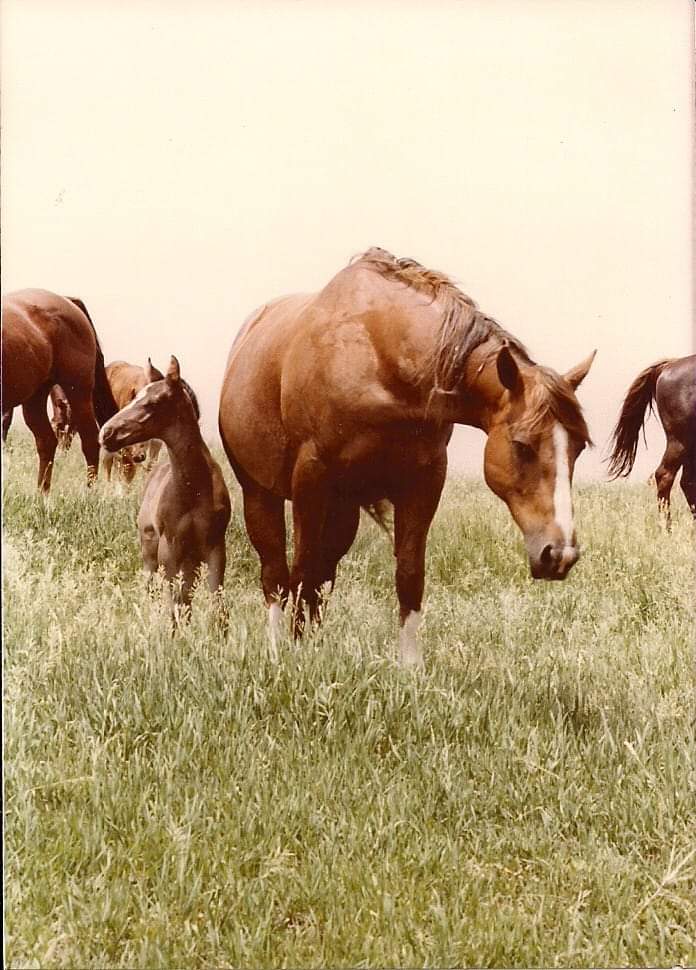
Another huge factor in the move was Bob’s dream of a reining breeding business. He wanted to expand. The constraints of fighting the Nebraska climate had made being in the breeding business more than difficult. He said, “It was a nightmare up north. We’d have winter babies then we’d have to fence off half the indoor arena for them so we’d only have half to ride in.
For his breeding business to keep pace with his dreams, he had to be in a more accommodating place. He felt the ideal location would be between Oklahoma City and Fort Worth and near I-35.
“Up there, I would ride horses all day then be on the phone all night hustling business. When you make your living outdoors and go to the barn at 7 a.m., when it’s below zero, and work until 6 p.m., it takes two hours to thaw your hands out.”
In Oklahoma and Texas, there was traffic – so much more business pulling into his driveway that he didn’t have to spend as many hours on the phone. He’s never regretted the move. He said, “Moving was the smartest thing I did. I have been here 37 years and I love it. I love the weather, the area – the people – just everything!”
Why did he choose the Sooner state over Texas? “I originally wanted to move to somewhere between Gainesville and Denton so I had looked at Texas,” Bob remembered.
But he couldn’t find what he wanted there. He continued, “I needed a lot of pasture, 500 acres or more near I-35. I had a big breeding program and I had longhorn cattle. I couldn’t find a place for sale in that Gainesville area with that much land. Plus, land in Texas was about three times as expensive. I crossed the Red River and found what I wanted with great grassland and sandy loam – perfect stopping ground – on 580 acres out from Marietta.”
Space was important for him – both for mares that would come to be bred to his stallions – and for his own sizable broodmare band. In those days, prior to shipped semen, all the mares had to be brought onsite to be bred, it took a lot more space.
And his passion was his broodmares. Bob’s breeding business was always based as much on mare power as on sires although he had already started with two exceptional stallions, Okie Power Leo in the early 70s and Boss Nowata Star in the mid-seventies. “In those days, when they were finished with a mare after the Futurity and Derby, they didn’t have much value. Whenever I saw a great mare at the end of her career, I’d try to buy her. If I saw a great stud or gelding, I’d call the AQHA and find out who its dam was and try to buy her.”

He rode horses for Willowbrook Farm in Catasauqua, Penn. He explained, “Dick Herr would have all the 2-year-olds started. I’d pick the ones I liked, and Mr. Fuller would send those to me to train. While I was there, I’d always look at Yearling studs. I did that in 1978 and the yearlings came out. One was about a foot shorter than the other ones. He was a Joe Cody out of a Doc Bar mare with a blaze face and a couple of white legs. I fell in love with him. He could turn around faster and be gone before the others could get started and his name was Topsail Cody.”
The stallion was a tremendous success for Loomis but it was when he bred Jeannie Whiz Bar to Topsail Cody and got a colt named Topsail Whiz that he felt his program reached a new level. “When I saw how good he was I sold Topsail Cody and when Topsail Whiz hit it was the greatest thing that ever happened to me. He was the most fun horse I ever rode and my greatest breeding horse.”
Bob had a catbird seat at the dawn of a growing industry. He recounted, “When I first started training reining horses it was an AQHA event then the NRHA formed in 1966, the year I started training. In 1967 I bought the best mare at the Futurity for $2.500. To have been involved in reining from the very beginning to now, it’s been amazing.”
Dick Pieper
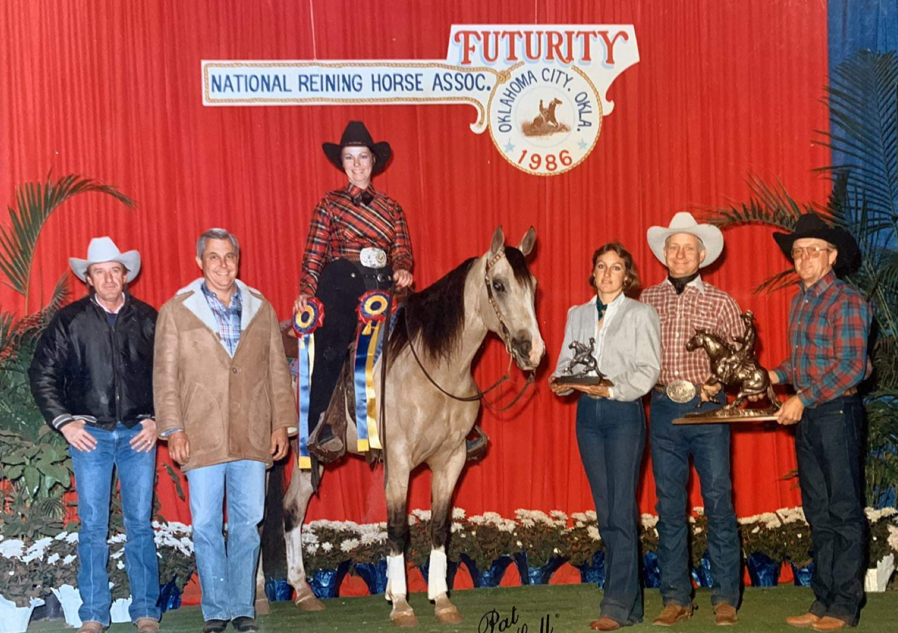
There was no questioning Dick Pieper’s enthusiasm for the reining industry. He was a consistent winner – with 23 NRHA Futurity Finalists between 1976 and 1995. He served as the NRHA’s president during times of landmark change – as the Futurity was relocated and the new judging system was enacted. He could see a bright future for the area with the 1986 NRHA Futurity set to move to the Oklahoma State Fairgrounds.
Raised on a farm in the foothills of the Appalachian Mountains in southern Ohio, Dick Pieper rode a horse from childhood, either gathering stock or just riding. Like his counterparts of the day, he grew up working on the farm full-time while attending school. His parents thought he should be a veterinarian, but Dick really wanted to be a horse trainer. In deference to his parents, he began school at Ohio State but the draft and Vietnam war were looming, so he enlisted in the U.S. Naval Reserve. Once out of the Navy, he returned home, built 16 stalls on the family farm, and began to train – everything.
Dick liked reining and cutting best but showed in halter, trail, roping, and pretty much any event the AQHA shows offered. Before long, his success was noticed, and he moved to just outside of Pittsburg, to work for E.T. Halo. Dick received his first national recognition showing Halo’s Mr Jim 45 to the title of 1972 AQHA Honor Roll Reining Stallion.
It was when he joined the fledgling NRHA that his career direction solidified. He qualified for the NRHA Futurity Finals in 1976, then won the 1977 Futurity on Spanish Mountain, owned by Bill and Pauline Haggis of Connecticut. He was Co-reserve champion of the 1979 Futurity and AQHA Junior Reining World Champion on Cee Blair Masota, owned by Crawford Williams of Raleigh.
His list of futurity finalists grew and in 1984 he was offered the job at the reining epicenter – Willowbrook Farm.
But shortly after that, as President of the NRHA and active in the industry, he would begin to feel the call to move to Oklahoma – especially since the futurity was moving there. He said, “I also felt like the business in Texas and Oklahoma was more reliable and steadier. People would give a lot more for the same horse there than they would in Pennsylvania. It seemed like, up there, there was a five, six, seven-thousand-dollar ceiling so it was hard to make any money if you raised a horse.”
As far as Oklahoma, he noted, “I’d always liked the area and always liked the people so we moved out – and our first week after we moved to Oklahoma, we sold a horse for way more than we could have gotten back east.”
The actual move came after an extended visit to the Marietta area – and a nudge from a friend. Dick explained, “Bob Loomis had moved down here before that first Oklahoma City Futurity, and he invited us to come out and get our horses in shape before the show so we did. We were going to lunch one day, and he said, “Let me show you this place.’”
The property Bob showed was a little over 100 acres and had some equipment sheds, but no other structures besides the house. That was just fine for the Piepers. “It was OK because we wanted to build really nice barns. The ground was good and we could see how the place could come together.”
The price was right and the deal was made. Next would come the building phase. The first project would be a training barn with 40 stalls, then a 20-stall show barn and the facility would continue to grow throughout the coming decades.
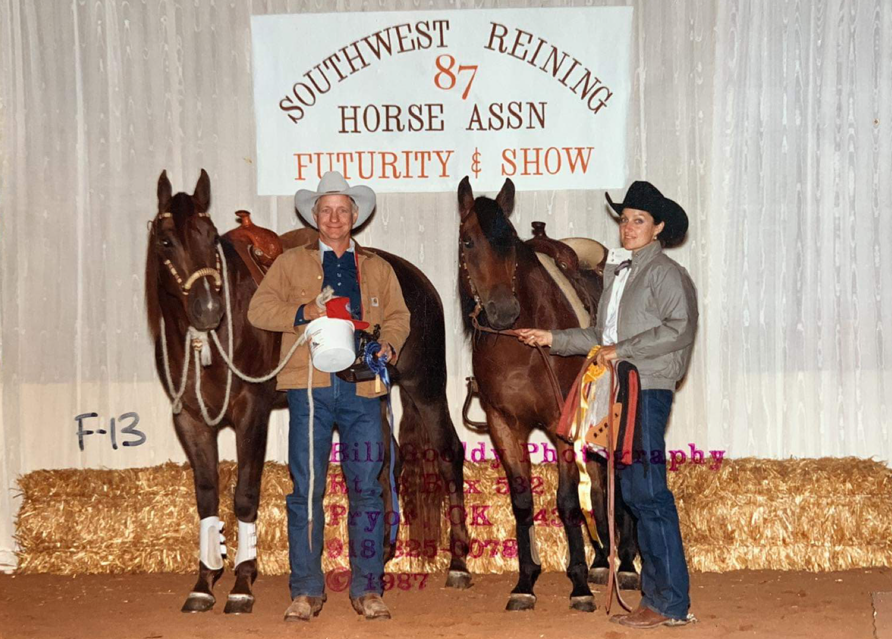
Those were the days when most reiners trained on tracks instead of in arenas so that was another important project, but one made easy because of the sandy soil. “Basically, all we did with the track was dig it up enough to kill the grass, so to speak. Then after we rode on it a month or six weeks, we got someone with a machine in there to level it, and it turned out really good. There were about 10 acres in that field, so it was quite open,” Dick said.
By March of the next year, Dick and his wife, Brenda, were the newest residents of Marietta.
In the coming years, much like their counterparts in the Gainesville area, the Pieper Ranch and the Loomis Ranch hosted both shows and clinics, attracting other reiners to the area and making reiners out of many who already resided there. Their dedication to the reining industry, along with that of their neighbors south of the Red River, would soon create ripples felt worldwide. But close to home, it also ultimately created one of the NRHA’s oldest and largest affiliates, the Southwest Reining Horse Association.
Doug Milholland
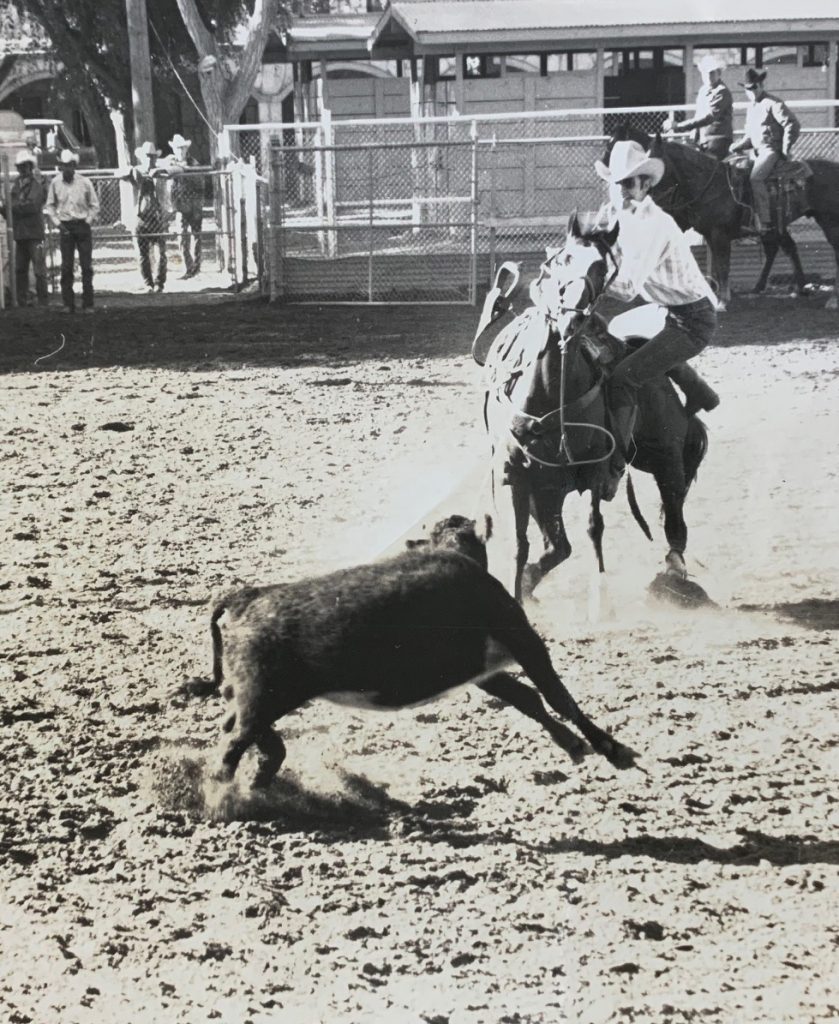
Grounded in ranching from a very early age, Doug literally grew up on a horse, working, not showing. But his background gave him a work ethic and skill set that would not be denied. When he applied his tenacity to showing reiners, success came quickly.
Like other reiners, Doug Milholland was drawn to the Oklahoma – North Texas area from the start. He and wife Valerie, had made multiple trips to show. He remembered, “We all went down in September of 1984 and stayed a few days to get our horses ready. Then we went to the Texas Classic at the Old Dallas Fairgrounds and another show near Austin. Bob Loomis won the reining at the show in Austin on How D Mae Bee.”
An unapproved highlight of the show came in a special competition where all the wives lined the husbands up along facing a wall and judged whose backside looked the best. Doug won that.
Like Loomis and Pieper, Doug had been considering the prospect of moving south. Originally from Colorado, the Milhollands lived about two hours west of Lincoln in Kearney Neb. He remembered the initial trip south, “Bob and Joyce and Valerie and I had come down in Bob’s motorhome in 1985 to look around and Jack Brainard went with us to look at properties.”
The process was fraught with risks, apparently. He laughed, recalling, “We looked at a place and we didn’t know a thing about chiggers and we all got eaten up.” Despite the chiggers the search went on. He continued, “We were always just having fun. Joe (Hayes) had rented a place at the time and when we found a nice facility Craig (Johnson) and Joe (Hayes) did rock, paper, scissors and Craig won – but he actually ended up buying the place across the street and Joe bought that place.”
Bob had found his place at Marietta, and it had what the reiners believed was perfect soil. Doug remembered, “Of course, sandy ground was important to us all. He bought it and worked hard getting the fences in shape for the horses and started building the show barn. When it was time to move, his plan was to load the horses up one evening then drive all night from Nebraska so we could get there and turn horses out, and they’d get to get used to the place in daylight.”
Although they were in on the plans to migrate south from the beginning, it would take a while for Doug and Valerie to make their move. Doug explained, “Bob could afford to make the move before selling his place in Nebraska, but we had to find a buyer in order to buy something new.”
In the ensuing years, the Milhollands made multiple trips to Oklahoma. They attended the Futurity and made the time worthwhile. Doug won the $100,000 Futurity Championship in 1990 on Silver Anniversary (Easter Gentleman X White Whiskey) owned by Terry Hunt. He was Reserve Champion in 1988 on Rest Stop (Topsail Cody X Villa Eddie) owned by Marc Stuart, Ltd., in 1991 on Denim Jac (Hollywood Jac 86 X Frosted Lining) owned by Dave & Lorene Zimmerman and in 1992 on Fancy Jac (Hollywood Jac 86 X A Great Star) owned by Sally Brown of Maple Plain, Minnesota. They also looked at properties, but it would not be until the Nebraska facility sold that the move could actually become a reality.
As soon as that was accomplished, they set out to Oklahoma again. Doug had been looking in Purcell and heard about a place in Lawton, so it was time for another trip. The Milhollands, accompanied by Steve Ross, who worked for Doug at the time, set out for Oklahoma.
After looking at the Lawton place, they decided it was too far off the beaten path and opted to move to Purcell. Doug remembered, “The place we bought in Purcell had the bones to be a nice place, and the ground was so good you could scratch it up and have a place to ride. It needed work, but it was a great location to me because I wasn’t particularly wanting Texas. I liked the idea of being closer to the Futurity.”
The Milhollands finally became residents of Oklahoma in the fall of 1994.

It was a welcome change. Doug said, “I lived in Nebraska for 13 years and there was only one winter I could ride outside because the ground freezes like concrete. We thought that year was going well, then there were two blizzards in March, and they lost over 3,000 head of cattle in our county alone. Down here in Oklahoma, we have some bad weather, but it usually only lasts a couple of days then, as soon as the sun comes out, it thaws.”
Doug had lived a lifetime of challenging weather. He grew up on his parents’ cattle ranch in western Colorado, east of Grand Junction. Like many ranch kids of the era, he was riding with his dad when he was not yet five. By the time he was ten, he was breaking colts.
The traditional ranching culture was a harsh taskmaster. At 12, Doug was riding a 2-year-old and took him out for a spin around the hay field. The colt started to run off. Doug recounted, “I had his head pulled around to my knee, but he didn’t stop; he did slip and fell down since the snow was melting in the Chinook wind. I was cold and had a bloody nose and was covered with mud. My dad asked me what happened, and I told him and said I wanted to go to the house. He said we couldn’t put the colt up until we knew I had control both ways.I wanted to go to the house, and he told me I could stay there and finish this or go home and be a momma’s boy. I didn’t want to be a momma’s boy, so I stayed.”
He broke colts and trained about 10 head a day from the time he was 14 – even while going to school. He got away from it for a short time after he and Valerie were married as his father-in-law didn’t think the best career was that of a horse trader. Doug remembered, “He talked me into getting in real estate with him and we nearly starved for a few years. One day, I got back on a horse and was so happy to be there!”

In 1975, at the age of 24, the Milhollands moved to Utah where they stayed until 1981. Doug helped start the Intermountain Reining Horse Association there, then they moved to Kearney in 1981. He started the Central Plains Reining Horse Association in about 1987. He served as president of both those associations for a handful of years each and both associations are still active to this day.
His early hard-won tenacity and character-building kept Doug going through the years and he would lead a singular life, helping with the church services at the Futurity for 30 years. He even let himself get volunteered for an early Reining Horse Foundation crisis fund fundraiser in which other trainers paid for the privilege of shaving his head and mustache. The fund-raiser earned an amazing $5,850 although most people laughingly remember that they could not recognize him until both grew back.
